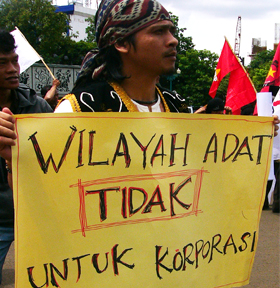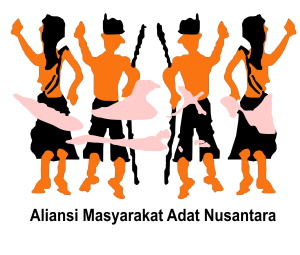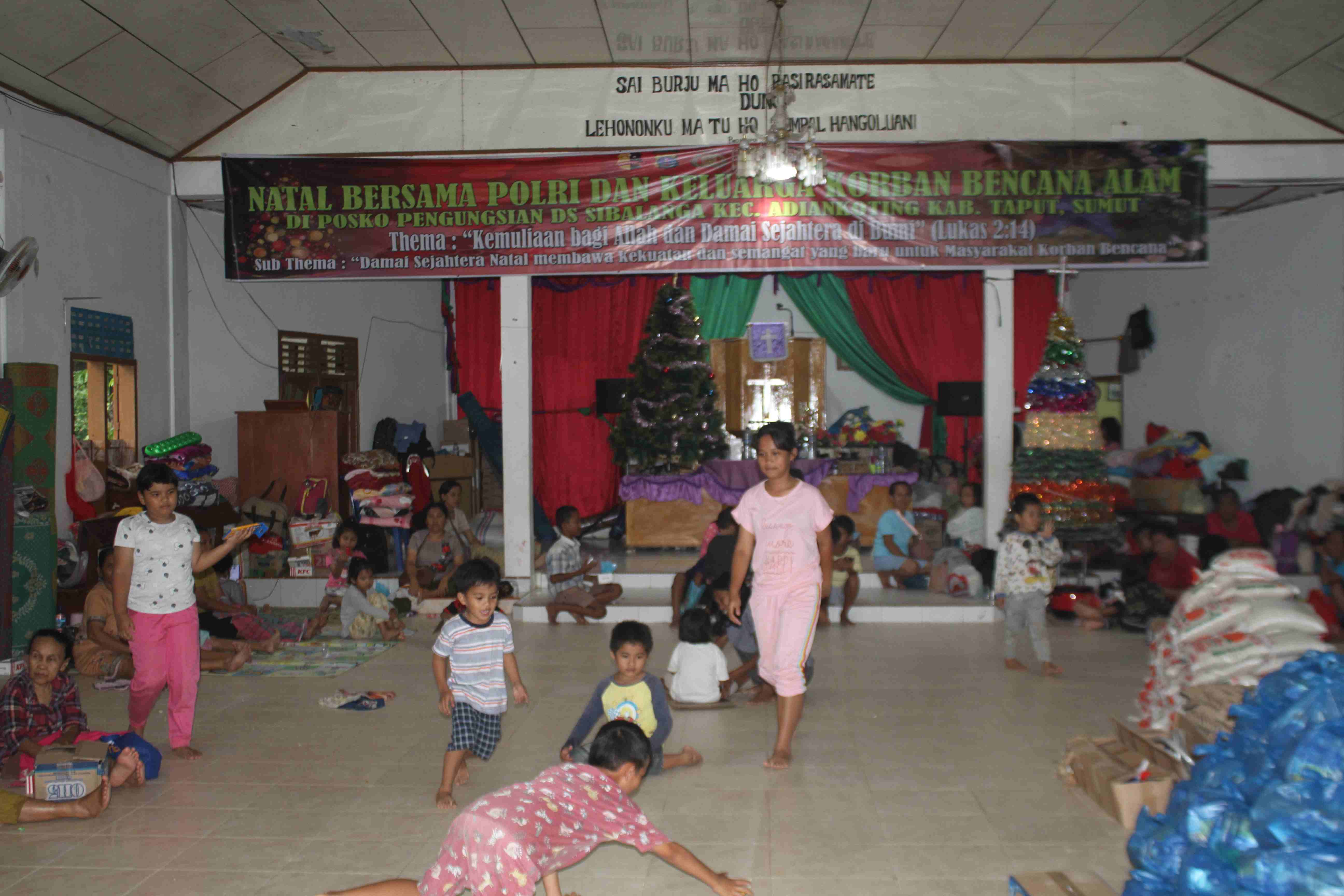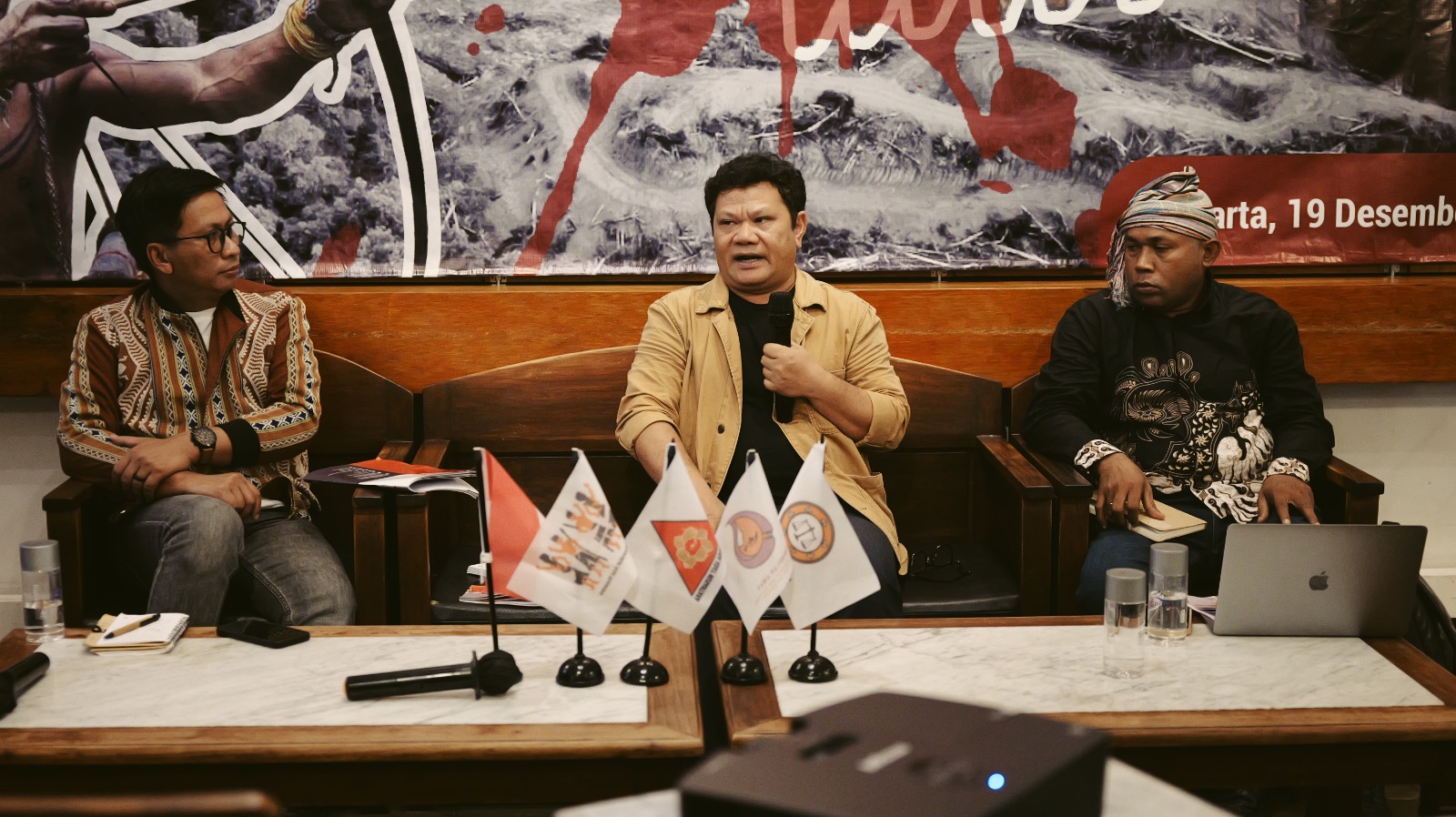
PTPN XIV Agrees to Return Wajo Ancestral Domain
03 Mei 2013 Berita Infokom AMAN[caption id="attachment_1769" align="alignleft" width="280"] Gambar Ilustrasi[/caption] Wajo, 30 April 2013 – PTPN XIV, state-owned plantation enterprise in Wajo regency, Sulawesi Selatan province, has agreed to return 1,934 hectares land to the regency to be managed by indigenous peoples entitled to the land, Tuesday (30/4/2013). The state-owned enterprise agreed to return the ancestral domain after peoples of Wajo occupied its office and chased away all of the employees since 20 April 2013, halting the plantation’s activities. Due to the occupation, provincial police then called all associated parties, including the peoples, leadership consultative council (Muspida) Kajo and Sulawesi Selatan respectively. The meeting decided that PTPN XIV had to return 1,934 hectares land to Wajo regency. The peoples will manage the whole land in accordance to regency’s ruling, which will be drafted by involving the peoples. The peoples guaranteed to not disturb any PTPN XIV’s activity on another land, a 60,000 hectares and waiting for its Land Cultivation Title (HGU). The agreement signing as well ended the occupation of PTPN XIV office. The Chronology The rights of Paselloreng indigenous peoples, Wajo regency to manage their ancestral domain were forcefully diverted to PT Bina Mulia Ternak (PT BMT) by the issuing of HGU in 1972. Even though the license’s period ended in 2003, Paselloreng indigenous peoples are not allowed to manage their ancestral domain afterward. Moreover, the ancestral domain has been converted into a state-owned plantation enterprise without prior consent of the indigenous peoples. Several violation and violence often occurred against Paselloreng indigenous peoples and are obvious on the chronology released by PTPN XIV’s Victims Defenders Front (Front Pembela Masyarakat Korban PTPN XIV Keera) and Wajo’s United People Forum (Forum Rakyat Bersatu Kab. Wajo). The peoples were initially unwilling to hand over their ancestral domain, but they faced intimidation. They lost their livelihood sources since they heavily depend on farming and herding livestock. In 1972, PT BMT agreed to compensate the peoples of Pitumpanua sub-district (now Keera sub-district), as much as 25 million rupiah for rice field and farm in Bekkae and Benceng-bencenge, 12.5 million rupiah for land in Keera village and 12 million rupiah for land in Awota village. None of the compensation is paid to the peoples. In 1973, PT BMT expanded its concession area by taking over Maniangpajo sub-district (now part of Gilireng sub-district). The license was given for 25 years period, yet PT BMT never compensates. Afterward, PTPN XIV took over lands previously managed by PT BMT, yet without peoples’ prior consent. The land was 8,000 hectares and within several villages, such as Paselloreng (Gilireng sub-district), Inrello, Awota, Laliseng, Ciromani and Ballere (Keera sub-district). The land taken over by PTPN XIV used to be Paselloreng indigenous peoples’ ancestral settlement and herding area. Moreover, HGU given to PT BMT was for stock farm, not oil palm plantation as PTPN XIV practices. On 23 April 2012 meeting, associated parties in Wajo agreed that PTPN XIV has to stop its expansion and planting activities within Wajo concession area. Peoples have to be allowed to manage the land without any condition and disturbance of police and PTPN XIV. On 12 March 2012, government of Wajo held a discussion with the management of PTPN XIV and governmental representatives, some of National Land Agency (BPN), Ministry of Finance and Ministry of Agriculture. The meeting held in the Directorate General for Plantation, Jakarta confirmed that HGU licensed to PTPN XIV Keera, Wajo district has ended in 2003. BPN hasn’t extended the said HGU because the Ministry of State Owned Enterprise hasn’t issued approval to release 4,236 hectares land (the wide comes from the difference between previous HGU on 12,170 hectares and proposed new one on 7,934 hectares). Regent of Wajo and Managing Director of PTPN XIV agreed on 6,000 hectares land for new HGU and 1,934 hectares land for the peoples.
Gambar Ilustrasi[/caption] Wajo, 30 April 2013 – PTPN XIV, state-owned plantation enterprise in Wajo regency, Sulawesi Selatan province, has agreed to return 1,934 hectares land to the regency to be managed by indigenous peoples entitled to the land, Tuesday (30/4/2013). The state-owned enterprise agreed to return the ancestral domain after peoples of Wajo occupied its office and chased away all of the employees since 20 April 2013, halting the plantation’s activities. Due to the occupation, provincial police then called all associated parties, including the peoples, leadership consultative council (Muspida) Kajo and Sulawesi Selatan respectively. The meeting decided that PTPN XIV had to return 1,934 hectares land to Wajo regency. The peoples will manage the whole land in accordance to regency’s ruling, which will be drafted by involving the peoples. The peoples guaranteed to not disturb any PTPN XIV’s activity on another land, a 60,000 hectares and waiting for its Land Cultivation Title (HGU). The agreement signing as well ended the occupation of PTPN XIV office. The Chronology The rights of Paselloreng indigenous peoples, Wajo regency to manage their ancestral domain were forcefully diverted to PT Bina Mulia Ternak (PT BMT) by the issuing of HGU in 1972. Even though the license’s period ended in 2003, Paselloreng indigenous peoples are not allowed to manage their ancestral domain afterward. Moreover, the ancestral domain has been converted into a state-owned plantation enterprise without prior consent of the indigenous peoples. Several violation and violence often occurred against Paselloreng indigenous peoples and are obvious on the chronology released by PTPN XIV’s Victims Defenders Front (Front Pembela Masyarakat Korban PTPN XIV Keera) and Wajo’s United People Forum (Forum Rakyat Bersatu Kab. Wajo). The peoples were initially unwilling to hand over their ancestral domain, but they faced intimidation. They lost their livelihood sources since they heavily depend on farming and herding livestock. In 1972, PT BMT agreed to compensate the peoples of Pitumpanua sub-district (now Keera sub-district), as much as 25 million rupiah for rice field and farm in Bekkae and Benceng-bencenge, 12.5 million rupiah for land in Keera village and 12 million rupiah for land in Awota village. None of the compensation is paid to the peoples. In 1973, PT BMT expanded its concession area by taking over Maniangpajo sub-district (now part of Gilireng sub-district). The license was given for 25 years period, yet PT BMT never compensates. Afterward, PTPN XIV took over lands previously managed by PT BMT, yet without peoples’ prior consent. The land was 8,000 hectares and within several villages, such as Paselloreng (Gilireng sub-district), Inrello, Awota, Laliseng, Ciromani and Ballere (Keera sub-district). The land taken over by PTPN XIV used to be Paselloreng indigenous peoples’ ancestral settlement and herding area. Moreover, HGU given to PT BMT was for stock farm, not oil palm plantation as PTPN XIV practices. On 23 April 2012 meeting, associated parties in Wajo agreed that PTPN XIV has to stop its expansion and planting activities within Wajo concession area. Peoples have to be allowed to manage the land without any condition and disturbance of police and PTPN XIV. On 12 March 2012, government of Wajo held a discussion with the management of PTPN XIV and governmental representatives, some of National Land Agency (BPN), Ministry of Finance and Ministry of Agriculture. The meeting held in the Directorate General for Plantation, Jakarta confirmed that HGU licensed to PTPN XIV Keera, Wajo district has ended in 2003. BPN hasn’t extended the said HGU because the Ministry of State Owned Enterprise hasn’t issued approval to release 4,236 hectares land (the wide comes from the difference between previous HGU on 12,170 hectares and proposed new one on 7,934 hectares). Regent of Wajo and Managing Director of PTPN XIV agreed on 6,000 hectares land for new HGU and 1,934 hectares land for the peoples.




.jpg)
.jpg)